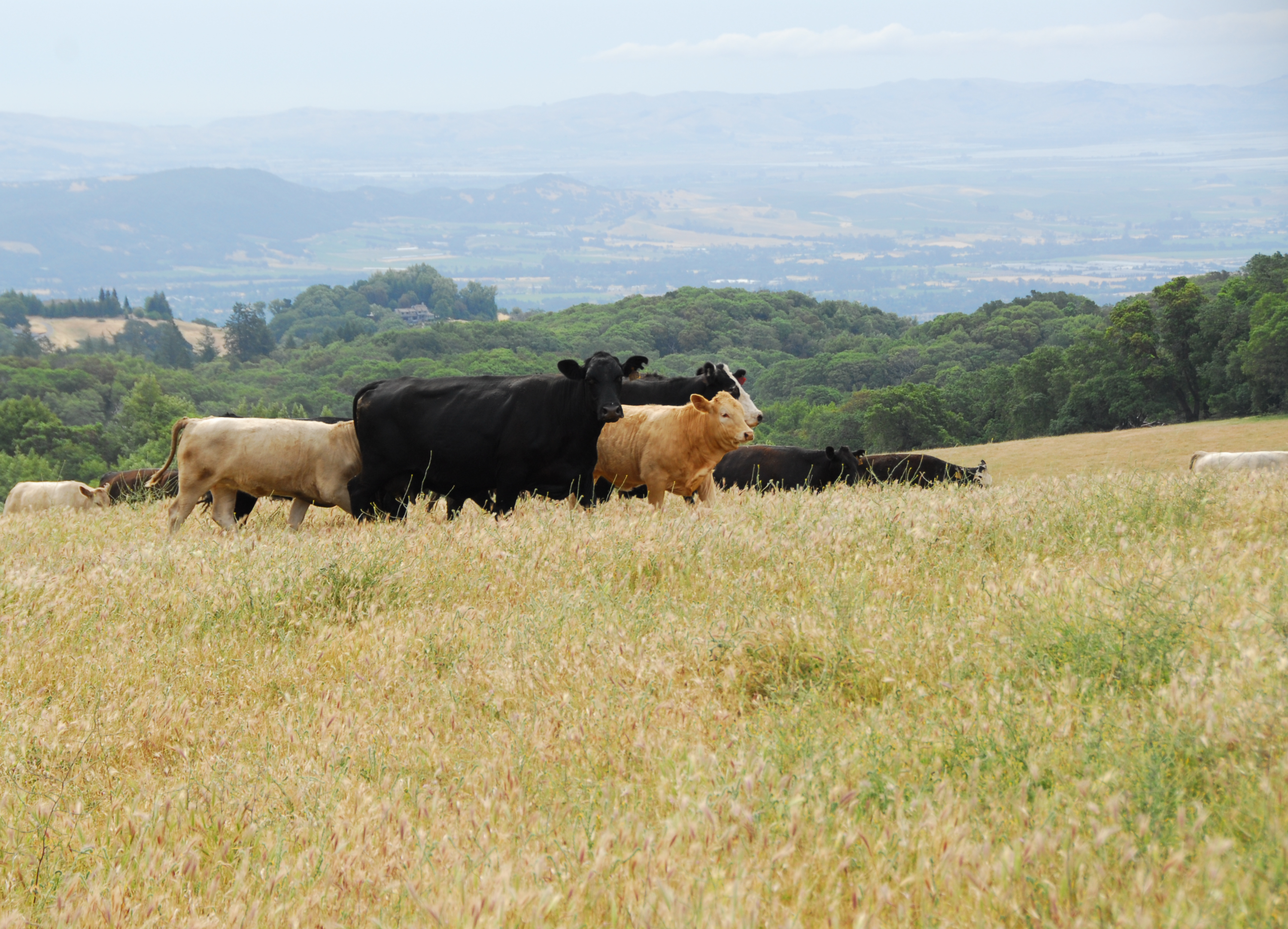Targeted Grazing Can Reduce Communities' Vulnerabilty to Wildfire

With the West in a state of permanent drought and under constant threat of wildfires, it’s more important than ever for land managers to control undesirable vegetation. For fire-prone communities scattered throughout the West’s tinder-dry hills and woods, it can be a matter of life and death.
One tool that can help manage vegetation is grazing.
“There’s a trend now to use livestock and targeted grazing to reduce fuels, reduce fire risk and reduce fire intensity,” explained Stephanie Larson, a University of California livestock and range management advisor for Sonoma and Marin counties. “But there are questions that need to be answered about the nutritional value of the forage and animal welfare.”
For example, goats were recently used to graze down brush near the Sonoma County city of Headsburg. But because the area that needed to be grazed was also an area listed as habitat for ground-nesting birds, the goats couldn’t be introduced before August and by then the brush was dry and inactive.
“So our question is when is the optimal time for grazing, taking in the nutritional needs of the animals and the fire-reduction potential of the grazing?” Larson said.
Larson and her research partner, Dan Macon, the University of California livestock and natural resources advisor for Placer, Nevada, Sutter and Yuba counties, recently received a grant from the Western Sustainable Agriculture Research and Education program to answer that question.
“We’ve got six herders working with us who run goats, sheep and cattle in Sonoma and Marin counties in the Bay Area, and in Placer and Nevada counties in the Sierra Nevada,” she said. “One element of the project is that we are going to collect forage samples of different plants at different times of the year to determine their nutritional values at different times of the year.”
The research team also plans to produce a field guide for herders with pictures and descriptions of common brush species – both ones to target and ones to avoid – and conduct public education and outreach activities explaining the value and process of targeted grazing to the public.
“For example, it might not look to some people that these animals are getting enough food,” Larson explained. “Our research is designed to determine if their nutritional needs are being met through grazing, or if they’ll need to be supplemented with hay or feed in tubs. We want to be able to show that to the public and document the role of grazers and herders.”
One audience for the research is wildland firefighters.
“When we talk to fire professionals, they say grazing works for fire prevention. They’ve seen it,” Larson said. “So we’re engaging them and giving them information they can use to educate the public. They’re trusted professional in communities that may not have a connection to ag production and may think of animal agriculture in negative terms.”
The research team will also work with the six cooperating herders to develop more infrastructure to support targeted-grazing operations sustainably, including identifying land ideal for targeted grazing, and helping herders develop long-term contracts.
“We want to look at how we get new people in the business,” Larson said.
In a fire-prone area like Sonoma County, Larson believes grazing is an essential component in any integrated vegetation management plan. It is also textbook integrated pest management.
“Grazing is biological control for removal of invasive species,” Larson said. “The land owner or manager doesn’t need to use mechanical or chemical methods to remove the undesired or invasive species because the grazers do it.”
The bottom line, Larson believes, is that long-term resiliency plans require using all available tools and options, and the best long-term vegetation management option is grazing.
“Folks can’t hire hand crews every year or do prescribed burning,” she said. “But they can have their land grazed, and while grazing won’t stop fires, it can slow down their spread and intensity.”